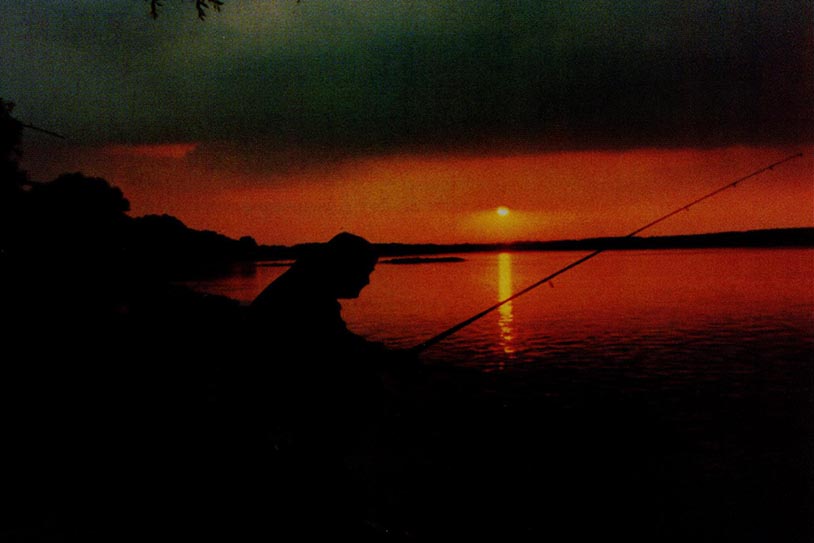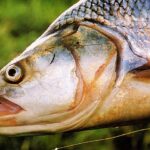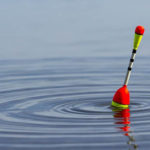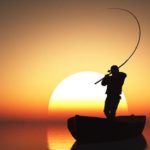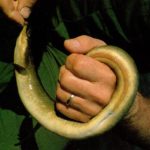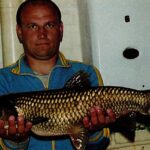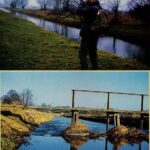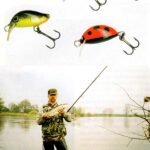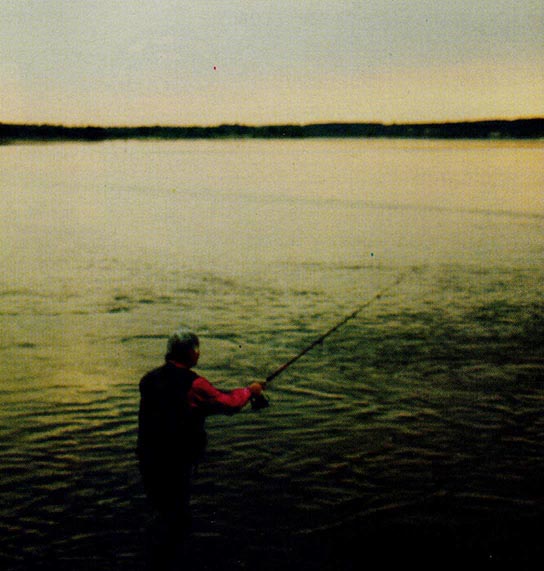 Od kilku lat tradycyjnie w październiku wybieram się na sandacze. Stosunkowo liczne ich występowanie w Wiśle (nawet w centrum Warszawy pomiędzy mostami) nie zmusza do dalekich wypraw. Parokilowy „sandał” wyholowany na żwawo merdającego ogonkiem ripperka sprawia mnie zawsze kolosalną frajdę. Dodatkowych emocji dostarcza pora łowienia: szansa na spotkanie z okazem o rześkim poranku lub o szarówce, a nawet w nocy.
Od kilku lat tradycyjnie w październiku wybieram się na sandacze. Stosunkowo liczne ich występowanie w Wiśle (nawet w centrum Warszawy pomiędzy mostami) nie zmusza do dalekich wypraw. Parokilowy „sandał” wyholowany na żwawo merdającego ogonkiem ripperka sprawia mnie zawsze kolosalną frajdę. Dodatkowych emocji dostarcza pora łowienia: szansa na spotkanie z okazem o rześkim poranku lub o szarówce, a nawet w nocy.
Technika mojego sandaczowego spinningowania to – albo specyficzna „zasiadka”, a więc w absolutnym bezruchu oczekiwania na zbliżenie się żerującego drapieżnika (aby w wieczornej pomroce jeszcze mniej być widocznym, przysiadam czasem na składanym krzesełku), albo dostarczające jeszcze więcej emocji nocne brodzenie w rzece.
Technika, techniką, ale z czym… na ryby. Obecnie na wędkarskim rynku sporo wędzisk spinningowych – w sam raz do połowu sandaczy. Podobnie z kołowrotkami. Warto więc tylko pamiętać, że sandaczowe wędzisko (długie na około 3 m) nie powinno być zbyt sztywne, ale jednocześnie z delikatną końcówką. Z tą delikatnością jednak nie należy przesadzać. Łowiąc bowiem często w głębokich miejscach za wiślanymi główkami z konieczności stosuję większe ołowiane łebki. Wklejanie „drgającej szczytówki” do spinningowego wędziska, owszem, zwiększa niewątpliwie możliwość lepszego wczucia się w subtelności delikatnego skubania „sandała”, ale z drugiej strony eliminuje przynęty silnie obciążone, przekreślając tym samym penetrację przydennych warstw głębokich rzecznych dołów gdzie przecież często trzymają się te ryby.
Uwaga na żyłkę. To bardzo istotny element sandaczowego zestawu. I nie chodzi tu bynajmniej o jej grubość (łowiąc w Wiśle, z uwagi na liczne zaczepy, stosują większe przekroje – 0,22 – 0,25 mm), lecz o kolor. W wieczornej pomroce istotna jest jak najlepsza widoczność żyłki, dlatego zrezygnowałem z żyłki jasnej na rzecz żółtozielonej fluo. Dzięki mojej fluo teraz znacznie lepiej widzę delikatne wyluzowanie się żyłki, gdy ripper dotknął już dna i subtelne jej pociągnięcia przez ostrożną rybę.
Sandacz ma w sobie coś z kota. I z oczu świecących w świetle latarki, i z charakteru. Podobnie jak kota do ataku nieodmiennie podgrywa go raptowne przyspieszenie uciekającej przed zębami zdobyczy. Mając na względzie ową kocią naturę sandacza, prowadzone przeze mnie sztuczne przynęty przemierzają toń wodną zakosami, to opadają do dna, wzniecając tam tak kuszące sandacze obłoczki mułu, to znów w raptownym przyspieszeniu wznoszą się ku powierzchni. Nie muszę chyba dodawać, że brania tych drapieżników najczęściej zdarzają mi się w czasie owego przyspieszania, albo swobodnego opadania sztucznej przynęty. Do takiej gry, wyzwalającej w sandaczu koci instynkt chwytania paszczą tego, co mu tak raptownie ucieka sprzed nosa, nadają się – moim zdaniem -najlepiej rippery, twistery i killershady (rybka z miękkiego tworzywa z charakterystycznymi pionowymi nacięciami na ogonku).
Z grupy tzw. miękkich przynęt za najbardziej skuteczne uważam rippery i killer shady o długości 8 cm, w kolorze perłowo-białym, ewentualnie z brokatem. Moje sandacze gustują też często w świecących fosforowym blaskiem killer shadach. Aby uzyskać lepszą, bardziej żwawą pracę ogonka przynęty można zmniejszyć jej grubość przez pocienienie małymi nożyczkami do manicure, lub po kąpieli we wrzątku można rippera czy killer shada rozciągnąć wzdłuż.
Miękkie przynęty nadają się, moim zdaniem, najlepiej do penetrowania wszystkich zagłębień w dnie rzeki, a także do łowienia na duże odległości. Ripperem z większym łebkiem można rzucać daleko i celnie, niczym dawniej popularną wahadłówką.
Kiedy słońce w czerwonej poświacie topi się już w Wiśle i stopniowo nad wodą robi się ciemniej, nocny drapieżnik – sandacz, przypływa na łowy do brzegu, zwłaszcza jeśli przy tym brzegu znajdują się patyki i kamienie. Raz po raz słyszę jego plusk.
W miejsce, w którym jeszcze się rozchodzą kręgi na wodzie radzę teraz natychmiast rzucić średniej wielkości pływającego woblerka. Parę obrotów korbką, przyspieszenie, przyhamowanie… i proszę już jest ryba! Największe jednak sandacze (o ile ich oczywiście nie przepłoszę zbyt głośnym chodzeniem po brzegu) przybliżą się dopiero o pełnym zmroku. Miejsca uderzenia ryby i rozchodzących się kręgów na wodzie już z pewnością nie zobaczę, ale od czego słuch. W nocnym łowieniu pływający wobler wygrywa zdecydowanie z miękką gumką. Głośny plusk z prawej gdzieś niedaleko…
Lekkim, ośmio centrymetrowym woblerem nie muszę po ciemku wcale daleko rzucać. Istotne jest tylko aby z grubsza trafić tam, gdzie przed chwilą pogonił rybki.
